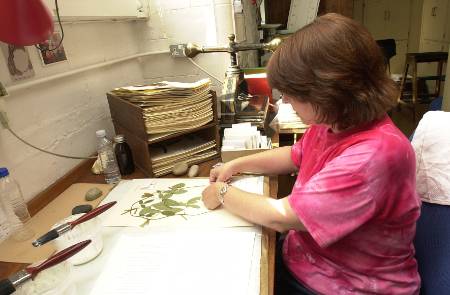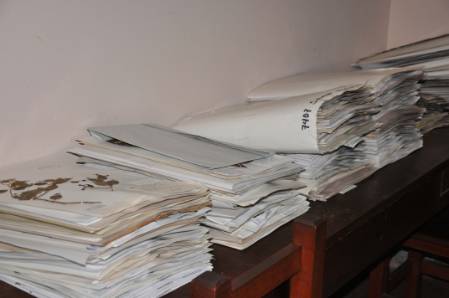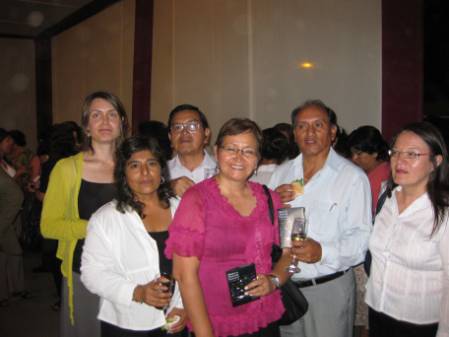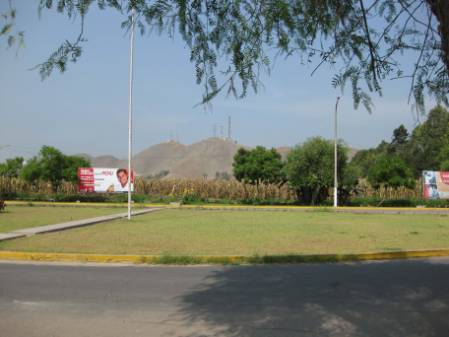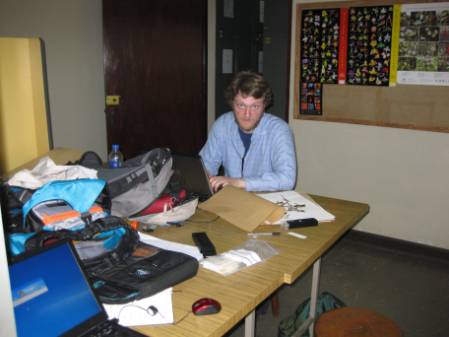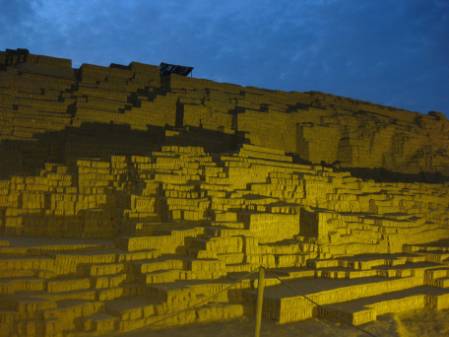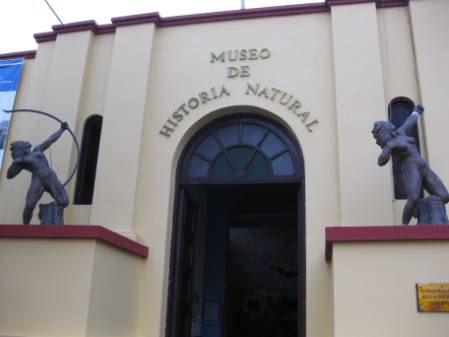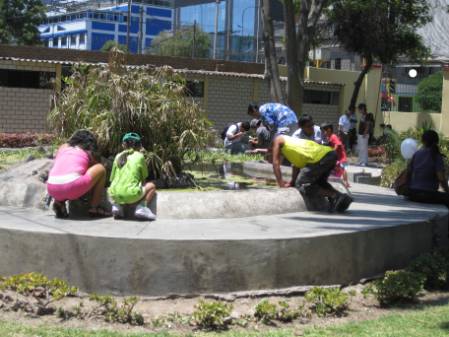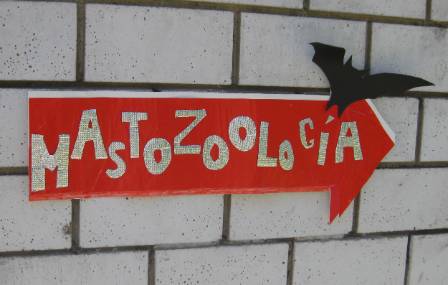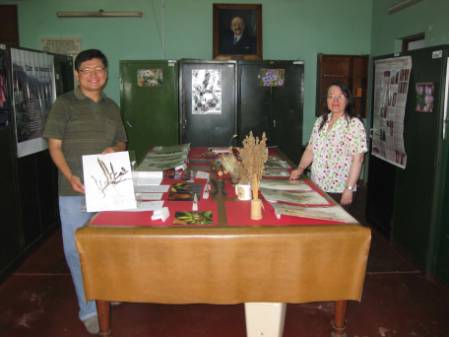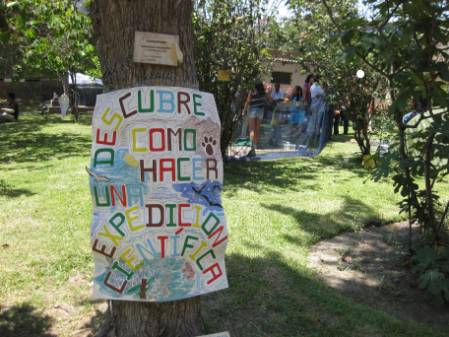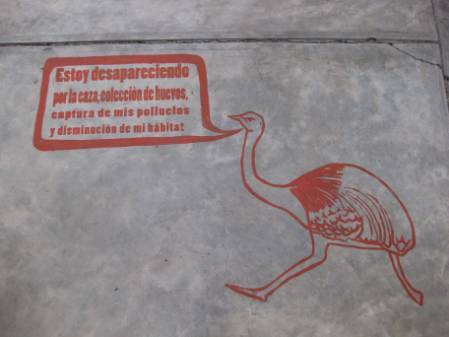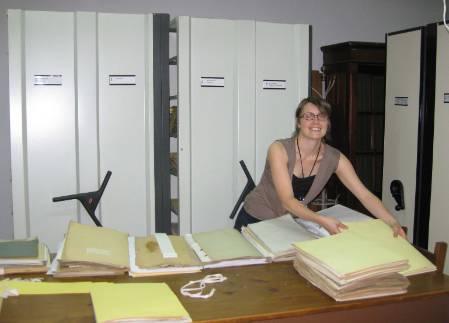29th March – Good bye to Freddy our car
Today we had to say goodbye to Freddy, our lovely and most faithful car. We are finally back in Lima!
The day passed sorting things out, and clearing and cleaning Freddy. Presses went back to the Museum’s store room, specimens into our preparation area, and so on. Most importantly, Paul re-united with his family – his 2 year old daughter Fabiana was full of smiles! In the evening we all went for a nice cake and ice cream to celebrate our safe homecoming.
30th March – Digitalising field notes
I have been typing our field notes bit by bit into our database. I started the job whilst we were in Arequipa. Yesterday I used the long drive to type some more in the car. Today I have spent all day doing this, and now as the typing has finished I am focusing on preparing herbarium labels. Our database software has a great interface for designing your labels – but you need to do some technical stuff to get the labels look perfect. It is pretty much like programming language, that is how it feels. Quite nice, very nice balance after all the field work.

Once the label design is correct, the labels need to be proof read. It is good to make sure they look perfect – they will remain with the specimens for years to come!! Sandy sent us acid free paper from UK, so that we can print the labels properly. For long term storage, it is important to use acid free paper. These specimens are going to be five star top quality!
2nd April – Applying for an export permit
Our labels are ready now! We printed them out, and then cut them neatly.
.JPG)
I sorted the labels into numeric order and then off we went to the herbarium to put them with the specimens! It felt great, we were very excited seeing the specimens all ready to be mounted and processed into the museum.
We had a small party to celebrate us finishing. Lemon pie and passion fruit limonade, yum yum! Here is the crew of the San Marcos herbarium, you can see the beautiful garden just outside:
.JPG)
Celebrations were also due as we handed in our export permit application this morning. We had prepared all the documents, and the museum’s secretary at the San Marcos herbarium had helped us to prepare another document necessary for the application. All that hard work paid off, and now we are just waiting to hear back from the Environmental Ministry.
3rd-4th April – Back in the herbarium with plants
Time to catch up with herbarium work. With all our experience now from our field trip, it is great to be back in the herbarium identifying specimens, and studying the material with more time in our hands.
Lima has two other herbaria in the Universidad Nacional Agraria Lamolina (MOL). We visited one of these herbaria today, the Weberbauer herbarium. The collection is rich in types, as many taxonomists used Weberbauer’s high quality specimens to describe new species. Unfortunately, the top duplicates used for describing these species were deposited in Berlin. These duplicates were destroyed during the Second World War, and now the remaining duplicates, many of which are in the Weberbauer herbarium in Lima, are extremely important. If they exist, they can be used to lectotypify the names for which types have been destroyed.
I needed to search through the material to find if some duplicates of Solanum sandianum or Solanum planifurcum might exist. I managed to find three specimens which are types of Solanum names, but none of them were the ones I was after. Good job done though, now these specimens can be scanned and put online for other taxonomists to use.
Here we are in the midst of annotating and databasing the material, with Professora Vilcapoma in the background.
.JPG)
5th April – Beautiful Lima
It is officially Semana Santa! The museum is closed today, and we are taking some time off to explore the city.
Lima is going through a heat wave. Generally in late March Lima is foggy. The fog enters from the Pacific, and takes over the city. With fog, there is less sun and the atmosphere in the city is cold, humid and dim. This year, however, the fog has not arrived yet despite it being April already. Instead, it is +35 degrees celcius every day, full sun shine.
We took a walk on the beach to touch the Pacific. Emilio Perales, a junior lecturer from the forestry department of the Universidad Nacional Agraria Lamolina, joined us on our walk – and got into a water war with Andrew!
.JPG)
Emilio explained to us how the local public transport system works. Lima’s famous micros are mindboggling to most tourists. Busses do not have numbers or routes, but instead, they are colour coded. The bus system is not that official even – it seems bus lines are just born out of necessity, rather than planned by the council. Anybody can become a bus driver as well, there is no licence involved.
Here are examples of the bus lines: the blue white line:
.JPG)
These busses go from Avenida Arequipa through the Ovalo in Miraflores to Chorrillos via Barranco. It’s a great bus as it takes the more scenic route through Larcomar along the coast.
Another one is the red white bus that comes to Chorillos too, but it takes a different route throught Avenida Tacna.
.JPG)
Then there are the more complex bus lines, like the green bus with black roof, two green stripes, one white stripe, and red at the bottom. Who knows where it goes …
.JPG)
The yellow white bus comes to Chorrillos through Abancay
.JPG)
I wish there would be a guide to these busses, but there isn’t. You just have to learn them as you go. It is quite an anarchistic public transport system. The bus drivers are not licensed either. I suppose you wake up one morning, decide to become a bus driver, hackle for a bus, buy it cheap, and paint it (this is the important part!). The next most important thing you need to become a successful bus line is a fierce assistant. We call these assistants bus pimps. The assistant’s job is to shout the route aloud from the moving bus, by hanging from the open bus door and by making as much noice and hand waving as you possibly can. If you accidentally make an eye contact with the bus pimps, you will quickly find yourself inside a bus on a route to somewhere – they are very keen on getting more customers!
Once you’ve got your head around the general system, you are off. The busses drive extremely arrogantly, which means you get to your destination fast.
People don’t believe me about the colour code when I try to explain it to them, so I hope the blog will help to de-mystify the system to any confused tourists in Lima.




